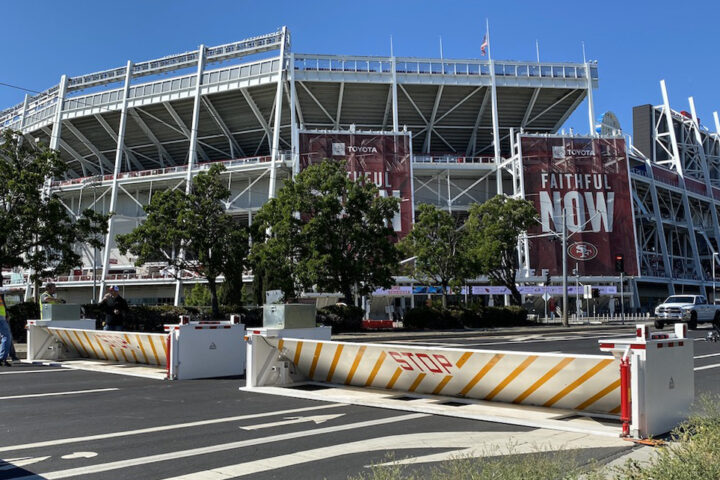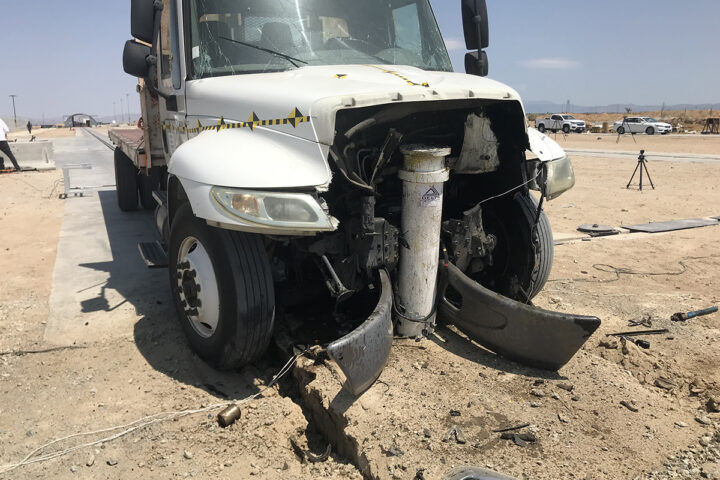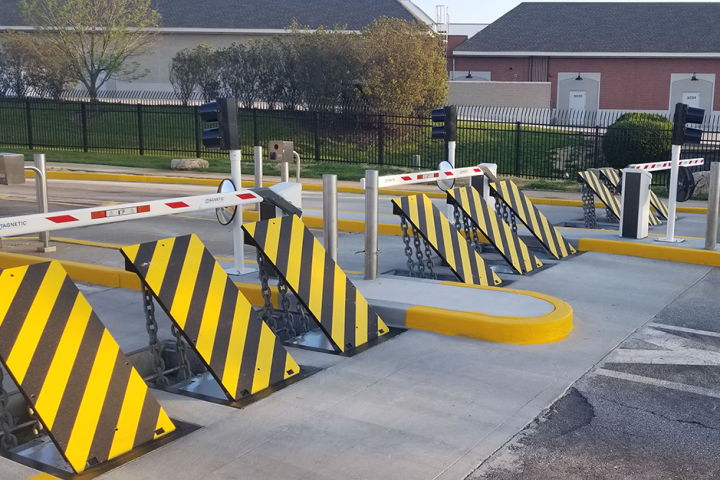There are many excellent reasons to choose Delta Scientific for vehicle access control equipment. After more than 40 years in the business, we have conducted over 50 certified crash tests successfully. We offer over 100 different product designs. However, sometimes it can be difficult for our clients to determine which of our products best meet their unique needs. As part of our comprehensive customer service, we offer lunch and learn meetings with potential clients for informational purposes.
Why Traffic Management Is Important
The invention of the automobile made land travel faster and easier. The next step was to make it more organized and efficient, a task that is never completed. Traffic management is the arrangement, control, guidance, and organization of motorized and non-motorized vehicles on the road; those that are stationary as well as those that are moving, as well as pedestrians. Traffic laws and signals bring order to the roads and thus can be seen as the primary rudiments of traffic management. However, traffic management is generally understood as handling traffic flow and volume throughout the day.
Get Acquainted With Portable Barriers From Delta Scientific
All our security barricades, including our portable barriers, receive crash ratings based on testing showing how effective they are at stopping a 15,000-pound vehicle at certain speeds. For example, an M50 crash rating means that the barrier can stop a vehicle traveling 50 miles per hour, an M40 barrier is effective at 40 miles per hour, and so on.
Delta Scientific Has a Role To Play in Protecting U.S. Military Bases
United States military bases, both those on home soil and overseas, face a wide variety of threats. Unconventional operations, such as information warfare and cyber weapons, also include vehicle attacks. Such attacks could also affect civilians living on military installations, such as the families of service members. For decades, Delta Scientific has been at the forefront of physical security for military facilities. In that time, our barriers have never failed to neutralize an attack.
Press Release July 28, 2021
Delta Scientific announces the successful testing of its ASTM F2656-20 M30/P1-certified Model DSC633, a single shallow foundation bollard design that stops and destroys a 15,000 (6.804 kg) pound test truck with -8.82 feet (-2.69 m) of static penetration and -3.63 feet (-1.1 m) of dynamic penetration. The simulated bomb load remained intact and contained on the truck bed. The test vehicle weighed 15,000 pounds (6,804 kg) and was traveling over 30 miles per hour (48 kpm). The truck was stopped and completely disabled.
Overview of Delta’s Maintenance Services and Technical Support
We are confident that you will be satisfied with the purchase of your security barricades from Delta Scientific. However, your relationship with us doesn’t have to end following installation. We stand behind our products and continue to provide technical support and maintenance services even after the purchase is complete. If you run into any difficulties following the purchase and installation of your product, we encourage you to contact us to discuss any questions, concerns, or problems you have with the product.
Product Spotlight: DSC720-1M Tall High Security Bollards
The highest crash-rated bollard that we offer at Delta Scientific is the DSC720. With a crash rating of K-12, its height of 35 inches is sufficient to stop most large vehicles. However, in Europe and the Middle East, truck cabs are taller than in the United States. Because these taller models can be top-heavy, they may tumble over standard bollards and cause damage even after bringing the vehicle to a halt.
Understanding Barrier Crash Ratings
Delta Scientific’s high-security barricades meet or exceed standards for the industry as evidenced by our crash ratings. However, unless you understand what the ratings mean, you cannot really appreciate how effective our barriers are. For this reason, we feel that it may be helpful to explain the crash ratings behind our products and what they mean.
Overview of Permanent High-Security Solutions From Delta Scientific
Different types of facilities have different security needs. Facilities where dangerous or critical operations take place, such as government facilities, power plants, warehouses, or airports, need a greater level of protection. Delta Scientific offers a range of high-security products to meet the unique needs of your establishment. Here is an overview of our permanent high-security solutions.
Our Fastest, Smallest, Shallowest Barricade: DSC2000
As terrorists become more emboldened and the threat of vehicle attacks increases, a crash-rated barricade becomes more necessary, especially for government buildings and other sensitive facilities. However, there are difficulties involved in transporting and installing many barricades. For one thing, if the facility is in a remote location, transporting the heavy equipment to the site can be a challenge. Conversely, if the facility is in a well-established and developed area, it is difficult to install the barricade without disturbing underground utilities and other buried elements.










